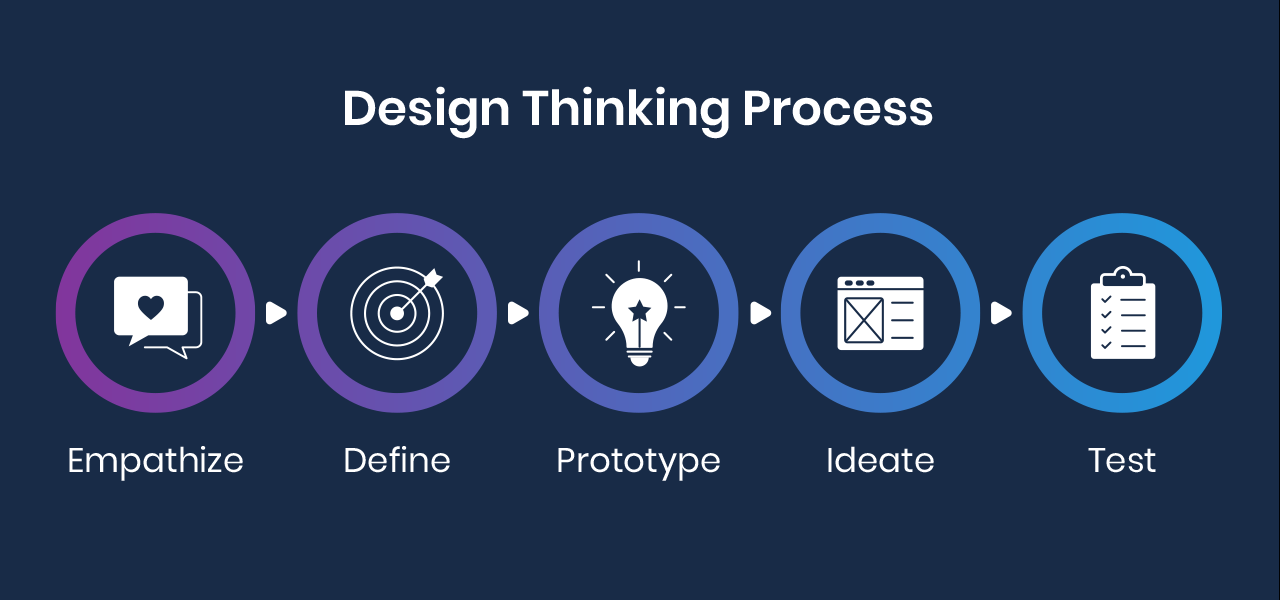Design Thinking- Worth the Hype?
February 18, 2023 | Expert Insights

With the rapid growth in technology and intensifying competition, Industries are always looking for innovative solutions that may strengthen their services and policies and develop better solutions for their users. Design Thinking was presented as one such creative approach to innovation and problem-solving that could help organisations implement new strategies, boost creativity, and improve overall function.
However, now the entire concept is under a cloud with questions being raised on its efficacy; some organisations have gone as far as to proclaim it an epic failure!
Background
Design Thinking first came into the light in 1969 when Herbert A. Simon and Robert McKim described a type of rudimentary “design process” that can be applied to science and engineering. In the next two decades, Design Thinking transformed into a problem-solving approach focusing more on human connections. One company that earned a global reputation using Design Thinking was IDEO, a design and consulting firm founded in 1991 in California with offices in the UK, Germany, Japan and China. IDEO used Design Thinking approach to create products, services, environments and digital experiences. IDEO CEO David Kelly was quoted as saying, “Design Thinking isn't just a method; it fundamentally changes the fabric of your organisation and your business.”. It was claimed that Design Thinking used the designer's work processes to systematically extract, teach, learn and apply human-centred techniques in designs, businesses etc.

Analysis
Design thinking is an iterative process in which you seek to understand your users, challenge assumptions, redefine problems and create innovative solutions you can prototype and test.
This “Post-It Notes” process contains a five-step strategy of Empathize, Define, Ideate, Prototype and Test, which helps bridge the gap between users and designers. It also facilitates creativity by bringing divergent sets of ideas to the table. With no money involved in the formulation of solutions, this might as well be considered a low-risk process.
Like every other popular phenomenon, Design Thinking passed through a honeymoon before succumbing to its own success. Whoever mentioned that Everything is getting better with Design thinking begins to say, “It’s not only getting worse but keeps getting worse faster!”
So, what are the pitfalls of Design thinking? Design thinking can be summed up by collaboration, insight, problem-solving, building and testing based on human-centred design. This generally can be assumed to be a great process. As the saying goes, "Too many cooks spoil the broth.”
Co-design and collaboration are where several experts work together to ideate and iterate. Critical thinking and the design process go downhill when too many people are on the team. Co-design with multiple stakeholders takes plenty of time. Once the ideation phase is reached, it requires deeper exploration with several insights.
The deeper the exploration is through design, experiment and testing, the more accurate the solution is! Great design solutions take time, deep flow and a dedicated team of creatives constantly pushing each other. Exploration and testing while ideas are maturing are crucial.
Other mistakes that might lead to the failure of Design thinking:
Process Specific: It could be a bad problem statement during the Define step, or testing a prototype without proper preparation can have catastrophic consequences. Execution has always been a predicament in Design Thinking. The enthusiastic brainstorming sessions and out-of-the-box ideas would not actually lead to building any products, designs or solutions.
People Specific: The organisation may not be ready to switch to Design Thinking, or there may be a lack of a creative atmosphere. Most offices these days are investing heavily in creating an amusement park-like environment without focusing on the team's creativity or innovation output. You cannot succeed at Design Thinking and innovation without a creative atmosphere.
Lack of Proper Guidance: Implementing Design Thinking in an organisation without proper management to guide and resources to practice and learn will only lead to a disaster.
Assessment
- Design thinking is a tool which helps businesses solve problems. With the adoption of certain practices, it can maximise the output of any organisation. However, it should be considered as a type of design process but not the whole design.
- When people hear the word Design Thinking, the misconception is it's something related to design. This should be viewed as an exercise which brings the business together to produce human-centred solutions.
- In this era of unprecedented human challenges, Design Thinking should update itself considering both short- and long-term implications. An extra dimension of sustainability should be added to this innovative methodology.








Comments